You’ll need a Havasu Falls permit to legally camp and visit the Havasupai Reservation, and the process is strict and time‑sensitive. Know the reservation windows, group limits, fees, transfer rules, and minimum stay before you try to book. Prepare gear, water, and a plan for trail and campground rules. Keep going — the next sections explain exactly how to secure a spot and avoid common mistakes.
Why You Need a Havasu Falls Permit and How It Works
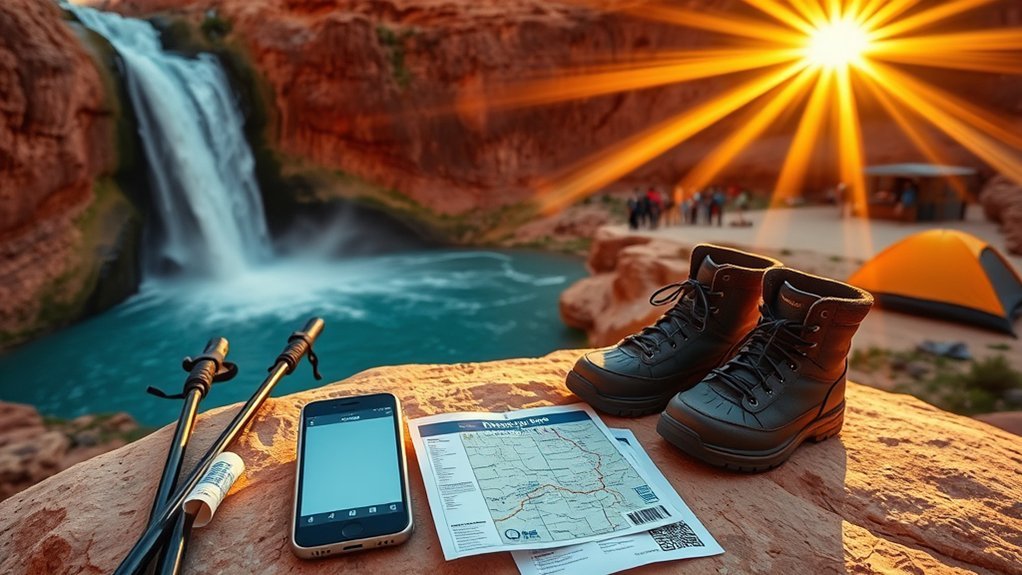
Because Havasu Falls sits within a protected tribal and canyon environment, you can’t just show up — a permit and campground reservation are mandatory, and day hiking isn’t allowed. You must get a Havasu Falls Permit from the Havasupai tribe to enter, and reservations for Havasu open annually. The permit for Havasu Falls requires campground reservations with a minimum stay (usually three nights) and full payment at booking. Each campground reservation covers up to 12 people, so plan group size — smaller parties (4–8) improve your chances when reservations open. Monitor Havasupai permits and daily cancellations to snag openings. Know the cost for a campground permit and secure payment quickly, because demand far outpaces supply.
Important Dates: Presale, Public Release, and Payment Deadlines
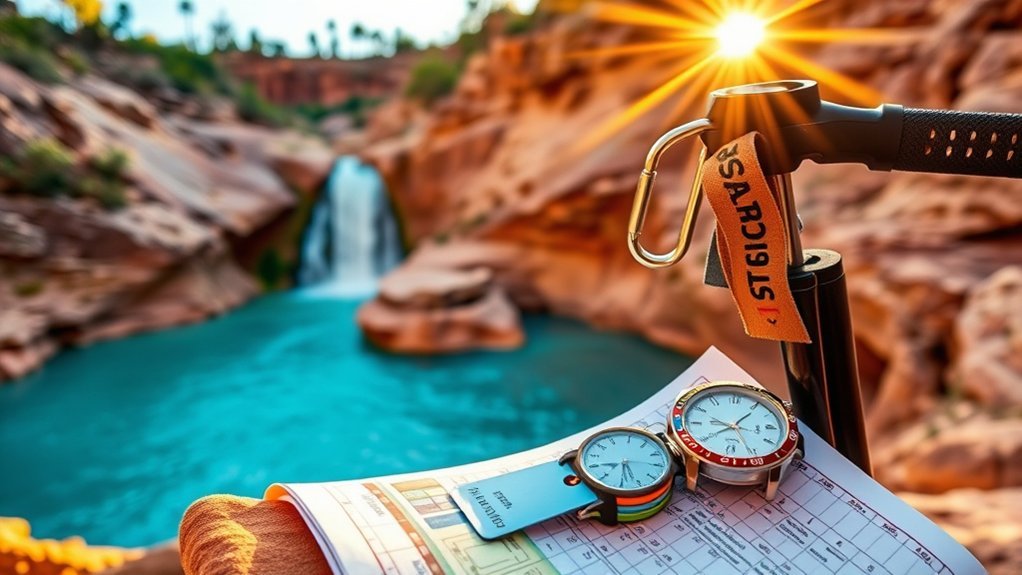
Getting a permit starts with knowing the calendar: presale reservations run December 16, 2024 at 8:00 am Arizona time through January 3, 2025 at 5:00 pm, with notifications of awarded presale permits sent by January 6 at 5:00 pm and full payment due by January 24 at 5:00 pm. You’ll use the Havasupai Reservation system’s presale reservation system and pay a non-refundable presale entry fee of $20 per person to enter. Public reservations open February 1, 2025 at 8:00 am Arizona time. These important dates and payment deadlines matter because permits for Havasu Falls sell out fast; high demand makes early login essential. Mark notification and full payment deadlines on your calendar to secure your permit.
How to Apply: Step‑by‑Step Reservation Process
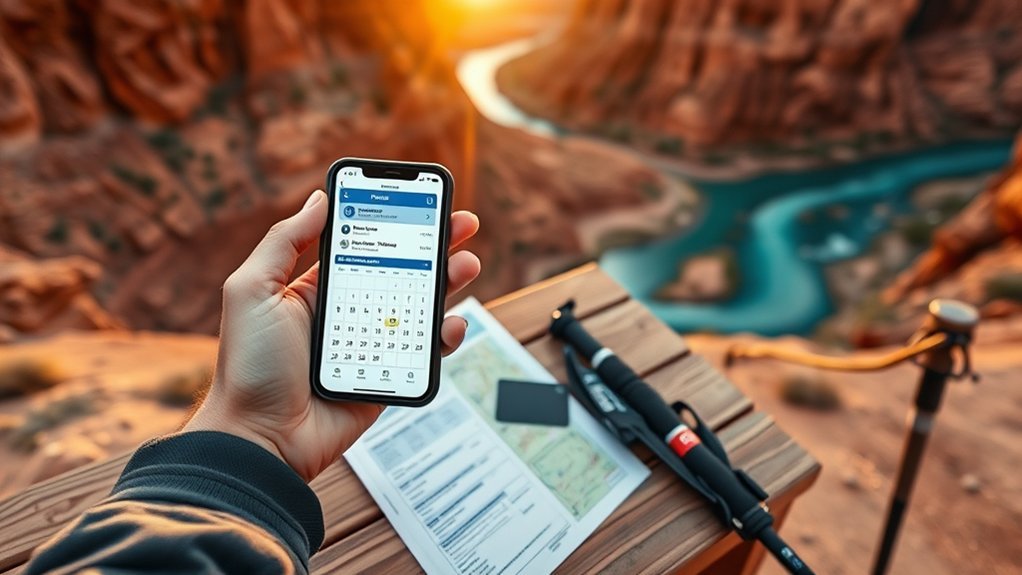
Start by creating an account on the official Havasupai Reservations site well before the reservation window opens so you can move fast on reservation day; then follow this step‑by‑step reservation process to secure Havasu Falls permits. Act quickly—these competitive permits sell out fast.
- On reservation day, click “Make A Campground Reservation” and select three possible start dates.
- During presale, pay the $20 non-refundable entry fee per person to apply for permits.
- Monitor cancellations and daily 8 AM Arizona updates for openings and complete full payment by the deadline if accepted.
- Finalize campground reservation details and follow Havasupai Tribe instructions for transfers or cancellations.
You’ll make a reservation efficiently if you prepare, move fast, and follow site prompts precisely.
Costs, Group Limits, and Minimum Stay Requirements
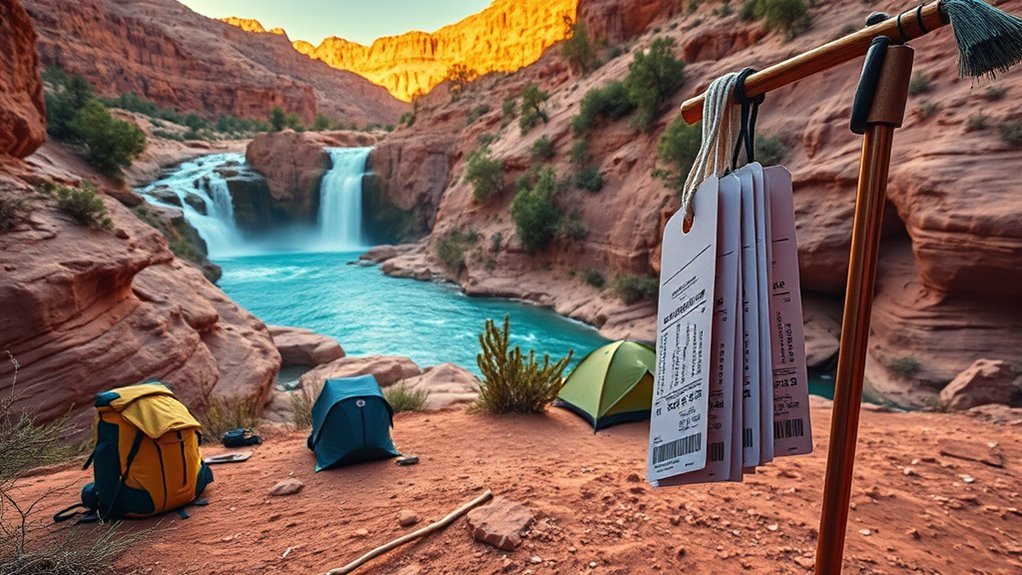
Once you’ve secured a reservation or are preparing to, know the fees, group limits, and minimum-stay rules so you can plan correctly and avoid surprises. Costs are fixed: campground camping reservations require a minimum 3-night stay at $455 per person (taxes and fees included). Havasupai Lodge rooms run $2,277 per room for a minimum 3-night stay, up to four guests. Minimum stay requirements (3 nights) apply to all bookings; day hiking isn’t permitted. Each campground reservation has a maximum group size of 12 people and must be made under one name — the Trip Leader. You’re required to provide full payment at reservation time for a permit to Havasu Falls. Book with that capacity and payment rule in mind to avoid issues.
Cancellations, Transfers, and Monitoring Daily Availability
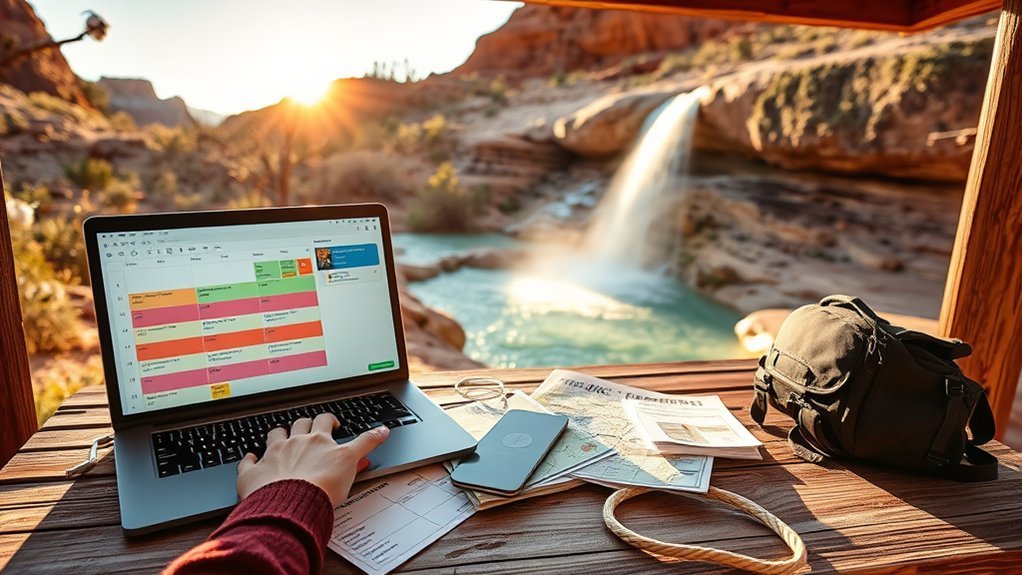
Because cancellations are posted every morning at 8:00 am Arizona time, you should check the Havasupai Reservations site daily if you’re flexible with dates — spots freed by cancellations become available for public purchase and smaller parties often have an advantage. Monitoring daily availability is key to securing permits when initial windows are full. You can transfer a reservation via the Havasupai Reservations website for a 10% fee; bring a printed confirmation or screenshot to check-in. Keep group size under 12 when possible — smaller groups have higher chances on cancellation days. Practical steps:
- Check cancellations at 8:00 am daily.
- Refresh the Havasupai Reservations page frequently.
- Transfer a reservation online if needed and save confirmation.
- Prioritize flexibility with travel dates for securing permits.
Practical Trip Prep: What to Pack, Rules, and Arrival Logistics
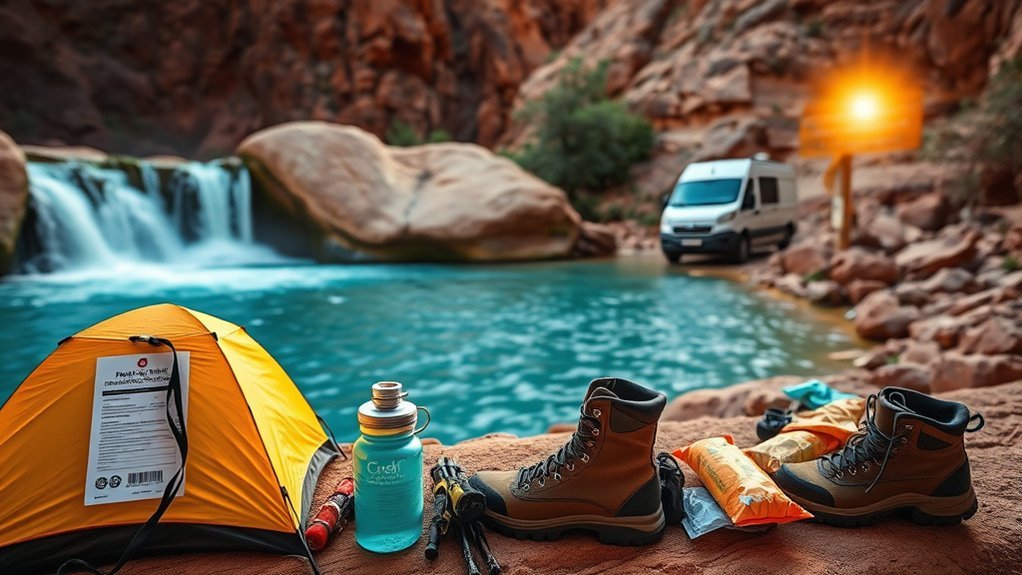
Before you head into the canyon, pack at least one gallon of water per person, sturdy hiking shoes, water shoes or rubber sandals, a bathing suit, and a first-aid kit, and remember campers must bring tents, food, and all gear. On arrival, the reservation holder must present a valid photo ID and the reservation confirmation at the Tourist Check‑In Office for everyone in the party. Follow trail rules—no littering, alcohol, drugs, drones, or campfires—and be prepared for no cell service, limited services in Supai Village, and no emergency assistance in the canyon.
Packing Essentials Checklist
If you want a smooth, safe Havasu Falls trip, pack deliberately: bring at least one gallon of water per person, sunscreen, a hat, a basic first-aid kit, snacks, and sturdy hiking shoes plus rubber sandals for the water. You’ll need camping reservation confirmation and photo ID for your permit; plan a minimum three‑night stay for Havasupai camping. Pack camping gear (tent, sleeping bag, pad, inflatable pillow), bathing suit, water shoes, and a portable stove—food isn’t provided on the trail. There’s no drinking water available, so carry all you need. Follow Leave No Trace: pack out trash and respect the canyon.
- Essentials to pack: water, sunscreen, hat, first‑aid
- Footwear: best hiking shoes + rubber sandals
- Cooking: stove, utensils, food
- Docs: permit, camping reservation, photo ID
Arrival & Check‑in Logistics
When you arrive at Havasu Falls, head straight to the Tourist Check‑In Office so the person named on the reservation can present a valid photo ID and the printed campground confirmation; only then will you be cleared to continue the 8‑mile hike from Hualapai Hilltop through Supai Village to the campground located 2 miles past the village. At check-in they’ll verify your permit and reservation details — no one else can sign in for you. Prepare essentials: at least 1 gallon of water per person, food, shelter, and hiking gear; there’s no potable water on the trail. Campground reservations are a minimum three nights and allow up to 12 people. Follow rules: no day hiking, no campfires, no alcohol or drugs, pack out trash, respect Leave No Trace.
Frequently Asked Questions
Are Drones Allowed at Havasu Falls?
No, drones aren’t allowed; follow drone regulations, obtain photography permits when required, respect local culture and wildlife encounters, pack proper hiking gear, consider weather conditions, use scenic viewpoints responsibly, note environmental impact, and follow safety precautions and photography tips.
Is Cell Service Available in the Canyon?
No, cell service is patchy; canyon communications are unreliable. You’ll experience weak signal strength and limited mobile networks, so plan data plans, list emergency contacts, prioritize hiking safety, manage technology usage, and conserve battery life in remote areas.
Can I Bring My Pet to Havasupai?
Better safe than sorry: you can’t bring pets—pet regulations forbid them, so you won’t be hiking with pets or finding pet friendly accommodations there. Consider alternative pet care, review leash requirements, vaccination requirements, safety tips, temperature considerations.
Are There Accessible Trails or Facilities for Disabilities?
No — you won’t find accessible hiking or full wheelchair accessibility; trail conditions, assistive devices, adaptive equipment, accessible campsites and disability services are limited. Check visitor information, safety measures and park regulations before planning.
Is Fishing or Collecting Rocks Permitted?
You can’t fish or collect rocks indiscriminately; symbolic footprints matter. Follow fishing regulations, obtain fishing licenses, respect protected areas and native species, consider environmental impact, ethical considerations, conservation efforts, visitor guidelines and wildlife protection at all times.
Conclusion
You’ll jump through the permit hoops, carry your own water, and camp at least three nights — all to stand under a waterfall that didn’t need your permission to be beautiful. That’s the irony: you’ll follow rules, pay fees, and plan logistics so the place stays wild for everyone. Do the work, pack smart, respect the limits, and you’ll get the reward: Havasu’s blue pools — unchanged by your careful, tedious stewardship.

